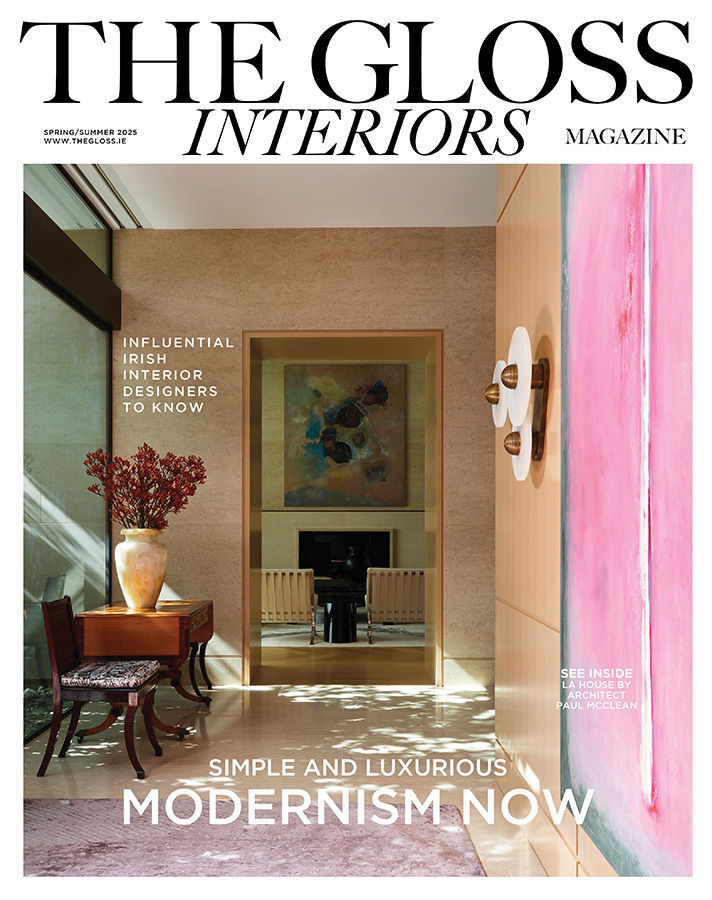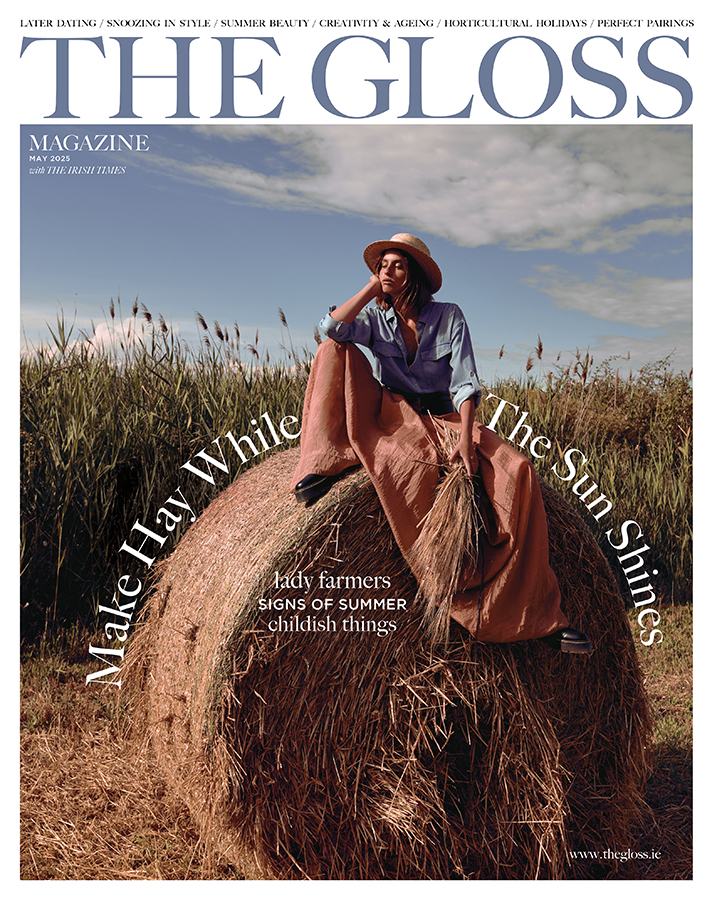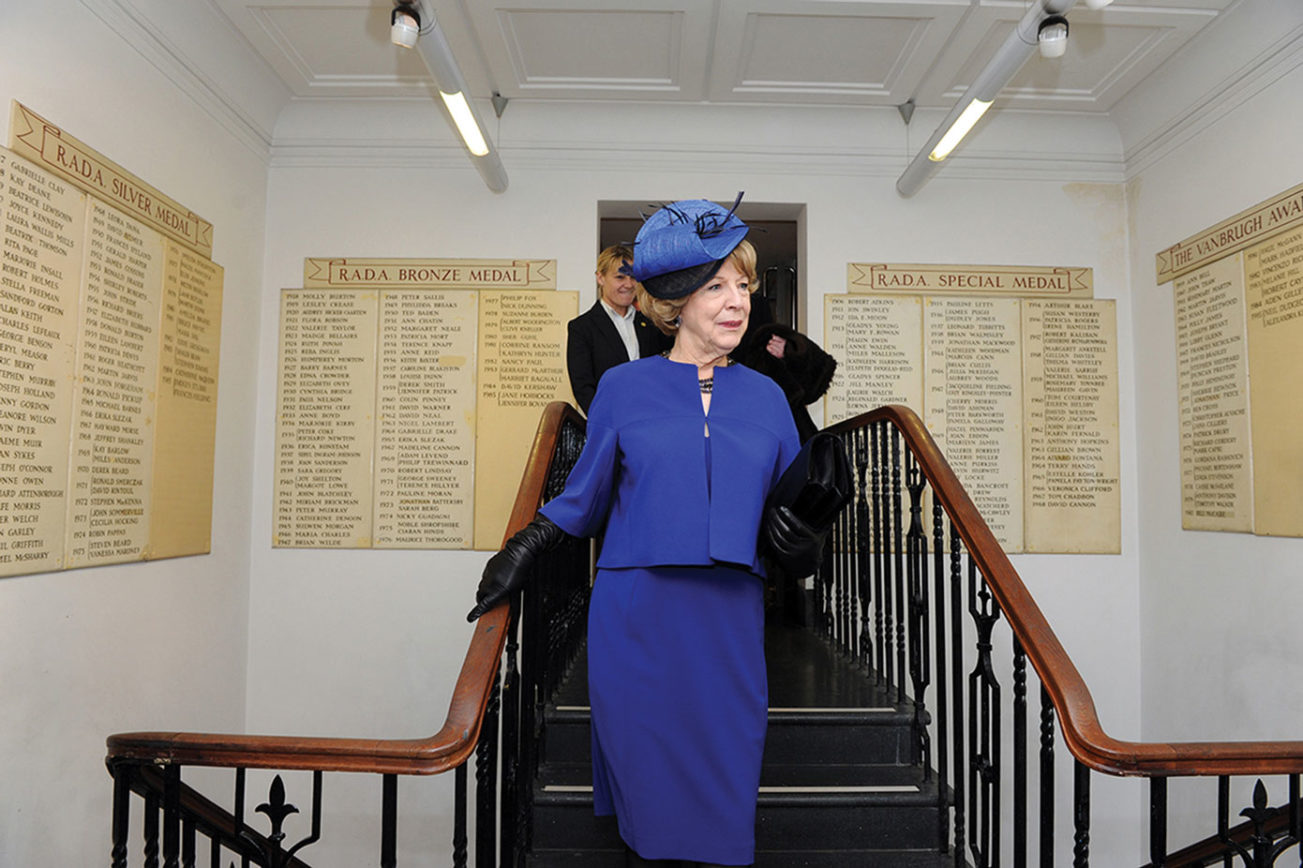As Sabina Higgins launches a year-long calendar of events and celebrations to mark 50 years of the National Women’s Council, we take a look back at an interview with the notoriously private actor and activist in 2015. Ireland’s philosophical first lady tells ANNE HARRIS how her background in drama and devotion to the arts, benefits her work at the Áras …
This article was first published in The Gloss Magazine in September 2015.
The foyer of the Fitzwilliam Hotel is dominated by twin portraits of women in resplendent garments but no faces. I was rather pleased with myself for spotting the potential here. What could be more guaranteed to exercise a strong-minded First Lady than faceless women? What better than a spot of feminism to break the ice at lunch in Thorntons at the Fitzwilliam with Sabina Higgins? Her response, when I mentioned it, was indeed wholehearted. “What an interesting idea. Rather like those children’s toys with no faces. The thing is, you can project anything you like on to it.”
I should have realised that our first lady defies pigeonholing. The first time I saw her up close was at the Irish Book Awards a few weeks after President Higgins’ inauguration. She was the picture of poise and perfection, but peering closer I saw she had kicked off her shoes under the table. If there was to be a battle between protocol and free spirit here, I felt certain protocol would be the loser. But back then, as with the faceless ladies now, I knew little about the complex emotional make up of the actor and activist that is Sabina Higgins.
Our meeting is immediately after her return from the Climate Conference in Paris where the President stepped up in the vanguard of world leaders on climate change. The big question for any interview with his spouse would surely be about life with the Great Man: a man given, in personality and politics, to the cosmic paradoxes of a Tolstoy, devoting his all for the good of mankind. But I was already beginning to see that things would not be that simple.
Meanwhile, another artist is hovering. Kevin Thornton arrives between courses to explain our choices – sashimi of wild salmon, fermented vegetables and seaweed, followed by king scallops, and finished with peach melba in poitín and fuchsia, the same for both of us. He paints a picture of sensuous produce from exotic Irish place names and each platter he sends out is a still life in itself. I can see he is gratified by her delight at the dillisk. I ask him how it feels to see his artistry disappear so quickly. “It’s a moment in time,” he says simply.
I begin to wonder if the window corner in Thorntons is a secret Zen zone. Sabina is talking about yoga and yin and yang, which is the perfect balance of masculine and feminine energies, and her joy at the upcoming Tai Chi reception at the Áras in September, followed fast by Latch On Day, to encourage breastfeeding, on October 5. In recent decades the Áras has been home to the cerebral cool of the Robinsons and the bold challenges of the MacAleeses. Here is something earthy, something very open – qualities which must have excited an idealistic young sociology lecturer from the west one fateful evening in Herbert Road in the late 1960s.
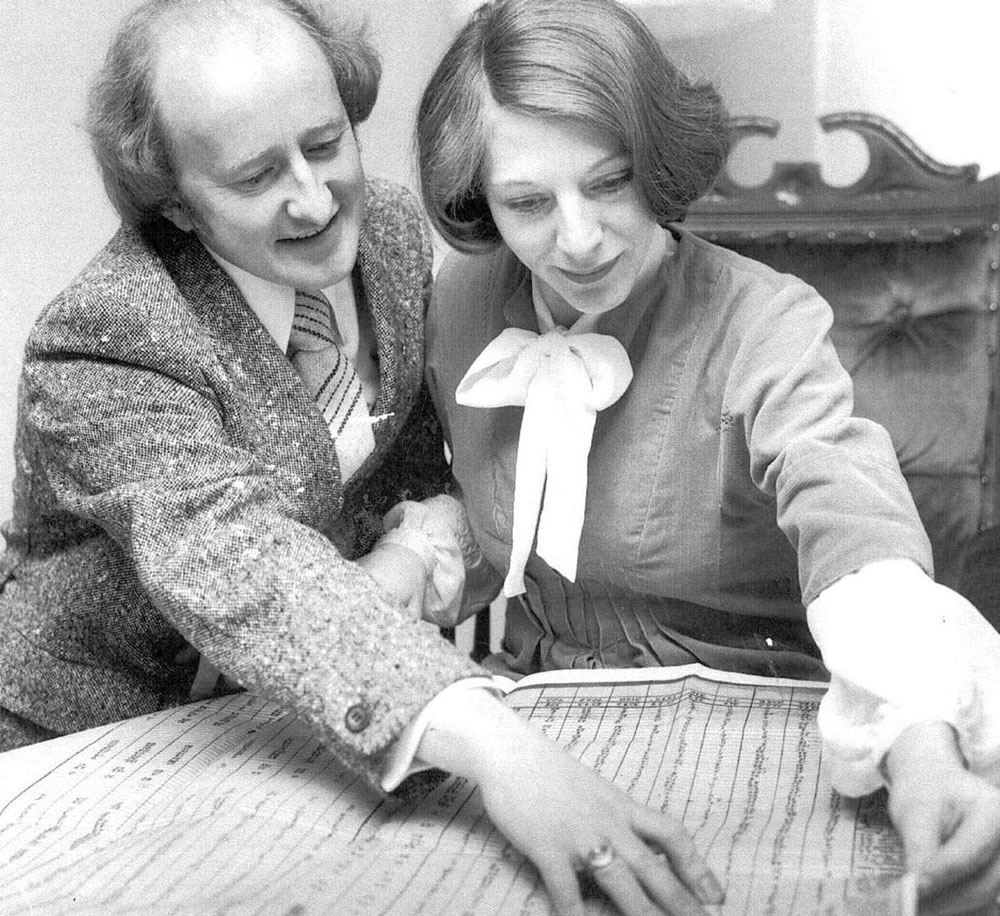
YIN AND YANG. Sabina Coyne and Michael D Higgins met in 1969 and were married five years later.
The summer of 1969 had the frisson of a blissful dawn in Ireland. Feminism and socialism were stirring. To be young was very heaven and Sabina Coyne and Michael D Higgins were young. “We met at a party in my friend Ursula Kenny’s [Mary’s sister] house in Dublin. It was Theatre Festival time. I was working with Deirdre O’Connell at the Focus Theatre. The three Michaels were there: Michael Mills from the Irish Press, Michael O’Leary, the Labour politician and Michael.” He asked to be introduced to “the willowy blonde”.
Between that night in 1969 and their wedding five years later the world changed for women and Sabina lived it intensely. “Michael was lecturing in Galway. I was at The Focus in Pembroke Place, Dublin. We used to repair to Mrs Gaj’s Restaurant in Baggot Street where a bottle of wine was two and six. The women’s movement met upstairs and we were downstairs with Mrs Gaj herself. We were an ensemble theatre, we all worked together – that was Deirdre’s motivation. She came from America, but her people were Irish and they had the pioneering thing. She brought something amazing and it spread.” The thing that she brought was the Stanislavski discipline, to which our conversation returns again and again. Clearly, it has informed every phase of her life. “Michael and I keep coming across people – poets, teachers, writers – who started there.”
I know that Stanislavski is the father of method acting, but Sabina is clearly talking about something more far reaching. Her explanation: “It involves imagination, relaxation, observation – through that system you evolve,” didn’t quite cut it for me. “Later she demonstrates: “It’s just listening really. It’s creating the space to put your thoughts out.” And without further ado, she puts her thoughts out: “She’s going to write about me,” she murmurs, meeting my eye, “but now she’s looking at me and she’s smiling.” And she’s unnerved, she could have added, not just because her thoughts were about me, but because it’s not often that you interview someone who has removed the veil of artifice we all wear on occasion. And now I am beginning to understand the Stanislavski, not merely a technique or an art that disguises art, but a profound inner honesty.
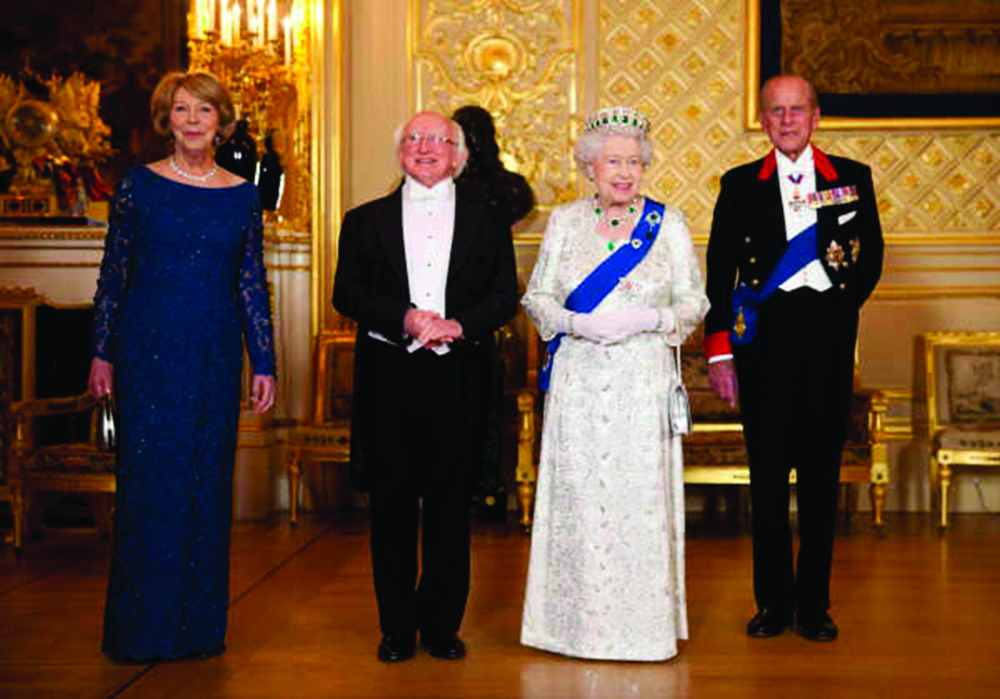
With Her Majesty Queen Elizabeth II and the Duke of Edinburgh prior to the State Banquet at Windsor Castle in April 2015. Higgins wears Louise Kennedy.
“I felt myself very blessed to have been one of the first students. We did all the modern classics, Ibsen, Strindberg, Beckett, Arthur Miller. We travelled around the country with Dolls House. We did improvisational theatre as well. We would take a theme – maybe a foreign developer coming into the west of Ireland and using the place. You would have all the environmentalists who didn’t want it and then the others. People didn’t realise we made them up.”
If this sounds hippy dippy, it was far from it. “Remember, in the 1960s there used to be happenings. Well, if we had a happening, we chose it to be a happening. It was a whole technique – all layered with history and all the things to get you conscious.”
So now we know why Sabina was so at home with the students at RADA on her visit to the Queen last year. As an actor, she was also a natural to take to the stage for the Dublin Lockout Commemoration to read Maud Gonne and Countess Markiewicz the previous year. Although the roles of the two women agitators resonated with her own life, she brings no prejudice to the English Queen whom she saw as “someone who has decided she wants to leave the world a better place”. “It was actually meeting Michael that moved me from the stage to being an activist,” she says. “I had the individual, he had the collective, of humanity.” That’s yin and yang right there.
Literary lives are often preoccupied by the idea of the artist and marriage, the survival of which often relies on dedication by one spouse to the elevation of the other. Sabina is an uncompromising artist: “The thing about art is how you bring it into everyday life. It’s about understanding humanity, so that there isn’t a break between you and other people. That’s the value of all the theatre and art.” The Higgins marriage has clearly subverted conventional wisdom and I am soon realising the big question is Life with The Great Woman. “What Michael gave me was the sense of the political. There is nothing more important. That’s what will matter if the planet is to be saved: politics.”
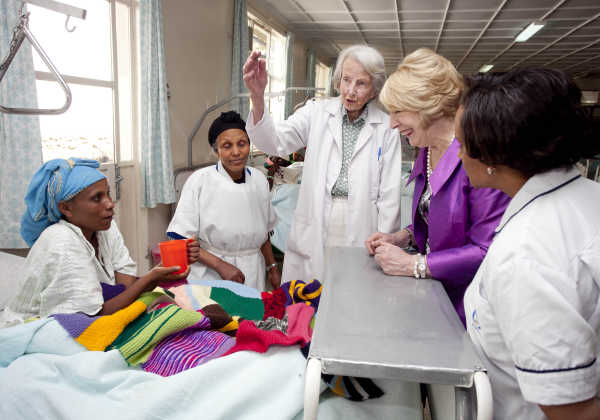
Politics, in Sabina’s world, is a classic concept – it’s community, virtue, frailty and the citizen’s right to pursue happiness. She talks about gender violence (“It’s heartbreaking”) and like a true artist, she is fearless about confronting the dark side. “From my own experience in drama I understand the frustration that makes a person turn on the one nearest to them.” She cites projects like the Man Up exhibition which shows men respecting women ultimately leads them to respect themselves. “Simple things like the man getting up in the middle of the night to feed a baby.” So did the President get up in the middle of the night to feed their four babies? “No. He didn’t have to, I breastfed them all.” The yin and yang again.
Her pioneering work on the Parents’ Councils in the 1980s showed the same willingness to work with the dark. “It was we who brought the motion that it would be mandatory that teachers would take action if a child was being abused.” Evolution in the curriculum was another success. “Making parents partners in education was a huge campaign and a most empowering thing for women,” she says. “Our children had left school before Educate Together came about. But it all happened just in time, now that we have children arriving from all over the world.” She sees teachers as the vanguard of the new Ireland. “They are the first to see the excellence in children. Michael and I are in schools a lot. In one multi-ethnic school recently, they all sang a song about how we are all together and nobody is going to bother us. If they are singing that every day, surely it will stick and nobody will be able to get at them.”
This month’s Presidential visit is to the UN, her great love: “It’s the hope of the world. The Beijing 1995 conference with its millennium goals was a mandate for action for women and all who signed up have implemented it”. Days before we meet, all 193 nations – a massive achievement in itself – had signed up for the new sustainable goals to eradicate poverty by 2030. “Only women’s involvement can help sustain the planet,” she says. “In Africa, women are the ones who produce everything, but they own nothing. This must change.”
Sabina believes the new goal is achievable, despite a realistic assessment of feminism today. “Remember how we all thought everything was going to get better for women everywhere? But now there’s bullying and terrible pressure. Women must be given tools, like philosophy, to think for themselves, to think this is my right, this is my gift. Your lifetime’s job is finding out what you are, what are your ethics. These are things the nations must do.”
As we work our way through Thornton’s masterpieces, we return from the sublime to the mundane: brown bread at the Áras. “Everything that’s eaten at the Áras is made at the Áras. Once I used to make bread myself with my little mill, but I don’t have time now.” Zen and the art of brown bread suddenly seems perfectly reasonable to me. “When this is over, if there is enough lifetime, I am interested in continuing with the yoga idea,” she says. For today, it’s clear, the Áras is her moment in time.
LOVETHEGLOSS.IE?
Sign up to our MAILING LIST now for a roundup of the latest fashion, beauty, interiors and entertaining news from THE GLOSS MAGAZINE’s daily dispatches.



